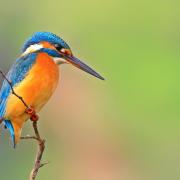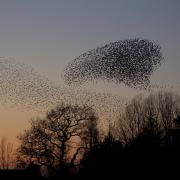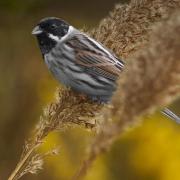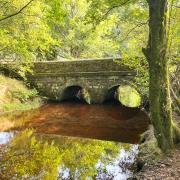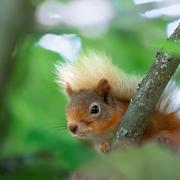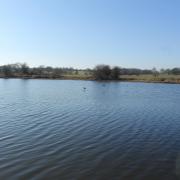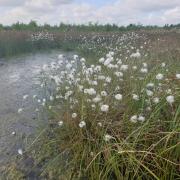Before the boundary thieves struck, Lancashire stretched from Coniston in the north to Manchester and Liverpool in the south. Lancashire Life steadfastly sticks to the traditional borders and much of that area is still watched over by Lancashire Wildlife Trust, which is the easy title. Officially we are known as the Wildlife Trust of Lancashire, Manchester and North Merseyside.
While I would dearly love to add Walney Island, off Barrow, as one of my favourite areas in the wider, wilder Lancashire, I am sticking to the vast landscapes we manage because there are some spectacular habitats and wonderful wildlife within those boundaries.
Most of these are well established but one, BROCKHOLES, is a newcomer. Birders flocked to the reserve over winter to see red kite, bittern, great white egret and little egret visiting lakes which five years ago were part of a sandstone quarry. Wildlife has settled, bred and flourished at the reserve which gets thousands of visitors every week, just off the M6, one of the country’s busiest motorways.
While ice creams on the floating visitor village add to a great summer’s day out a short walk will take you to wild places in woodland or along lakesides where the sights and sounds of wildlife are remarkable. Kestrels, hobbies, barn owls and buzzards are the local birds of prey, reed warblers and reed buntings add to dawn choruses and don’t be surprised if you see brown hares, roe deers and weasels. There was even a sighting of an otter earlier this year.
Moving over to a more established reserve in West Lancashire, a visit to MERE SANDS WOODS is fruitful in any weather. A woodland wrapped around four lakes, the reserve has been home to red squirrels for some time, as their number fluctuated elsewhere.
Visit one of the hides and you are guaranteed a view of a variety of species. This is the reserve where we get lots of sightings of kingfisher, bittern and water rail.
There are few reminders of Wigan’s industrial past at WIGAN FLASHES, except for the fact that the lakes were formed by mining subsidence. Every time I visit I see great crested grebe.
I believe these birds are one of the most beautiful we have in the UK. They are the embodiment of the word graceful and will give great displays of diving – resurfacing metres away and out of camera range. Wigan is also home to one of Britain’s most endangered birds, the willow tit.
One of Lancashire Wildlife Trust’s most remarkable reserves is SALTHILL QUARRY, which rises up around an industrial estate, even though there is evidence that it used to be on the bottom of the ocean. On the floor today you can find fossilized tubes that look like stacks of Polo mints, but they are sea lilies or crinoids, believed to be more than 300 million-years-old. Artist Fiona Bowley created a Crinoid Seat where you can sit and take in the views of Pendle Hill. Salthill is also renowned for its wildflower meadows and it is also a great place to see the distinctive red and black six-spot burnet moth.
In the north west we are blessed to have some wonderful landscapes minutes away from where we live. For example the WEST PENNINE MOORS is an awe-inspiring landscape, 100 square hectares surrounded by more than 10 million people, yet wildlife flourishes. My home is literally 200 steps away and it is a different world.
As I walk onto the moors curlews cry overhead, defending their nests, young, buzzards soar even higher and out of sight you can hear the constant twittering of one of my favourite birds, the skylark. Tree and meadow pipits are common and in the coming years the Wildlife Trust is hoping that habitat works will see twite breeding on the Lancashire moors again.
Recently I paid a visit to OTTERSPOOL PARK just south of Liverpool city centre, where Wildlife Trust volunteers are working to restore one of the few ancient woodlands left in the city. The variety here is incredible. If you walk from Sefton Park through the wooded area along the former path of the River Jericho it opens out onto Otterspool Promenade and the River Mersey. This is popular for kite-flying and views of the historic Liverpool waterfront.
There are no otters at Otterspool now, last reported in Roman times, but there are plenty of birds in the woods including great spotted woodpecker, jay and tawny owl.
Another ancient woodland can be found by heading up the M6 towards Carnforth and then turning right and following the River Lune for AUGHTON WOODS. Golden saxifrage, speedwell and foxglove are there in summer. Fabulous woodpeckers, treecreepers and five species of tit inhabit the woods. Striking pied flycatchers and nuthatches also breed here.
Looking out across the Lune you will see oystercatchers and common sandpipers and this is the county’s otter hostpot all the way along to the Crook o’ Lune. Getting into Aughton Woods is a bit – more than a bit – of a hike but it is worth it.
On the other side of the motorway is the wonderful Morecambe Bay and you won’t get a better view of the bay than from WARTON CRAG. Again it’s a good climb to the limestone tops.
Warton Crag is particularly popular with peregrines and butterflies. Peregrines, the world’s fastest creature, perch their nests on the old quarry face and if you have binoculars you are guaranteed to see one. Sunny corners attract pearl-bordered fritillary in May, small pearl-bordered fritillary in June and, in July, the nationally threatened high brown fritillary. Nearby is the superb RSPB reserve Leighton Moss, so this area is definitely worth a weekend out.
Sticking to the coast the Wildlife Trust has worked hard to strengthen the dune barrier along the Fylde. This protects the homes along the coast and the wildlife particularly at LYTHAM LOCAL NATURE RESERVE. Three species of bird which breed within the dunes are on the Red List of species of conservation concern - reed bunting, skylark and common linnet.
Fourteen species of mammal have been recorded there: Common shrew, pygmy shrew, hedgehog, water vole, short-tailed field vole, long-tailed field mouse, rabbit, brown hare, stoat, weasel, fox, mole, brown rat and sika deer.
Finally now is the time to visit the mosslands of Salford and Wigan. The Wildlife Trust owns CADISHEAD, ASTLEY and LITTLE WOOLDON MOSSES. The industrial peat digging on these sites has made them inaccessible to the 1.5 million people who live around them for decades.
Now they are being opened up to wildlife and people as nature reserves. Restored moss offers great cover for more than 70 species of birds while the peat extraction-scarred areas are suddenly being discovered by dragonflies, butterflies, brown hare and nesting curlew.
To be honest you can spot wildlife anywhere you go in the north west. In spring a fox was seen at Media City in Salford and we have heard reports of salmon in the Manchester Ship Canal.
Alan Wright is communications officer at the Wildlife Trust for Lancashire, Manchester and North Merseyside.
Details of all the sites mentioned can be found on the Trust website www.lancswt.org.uk.












